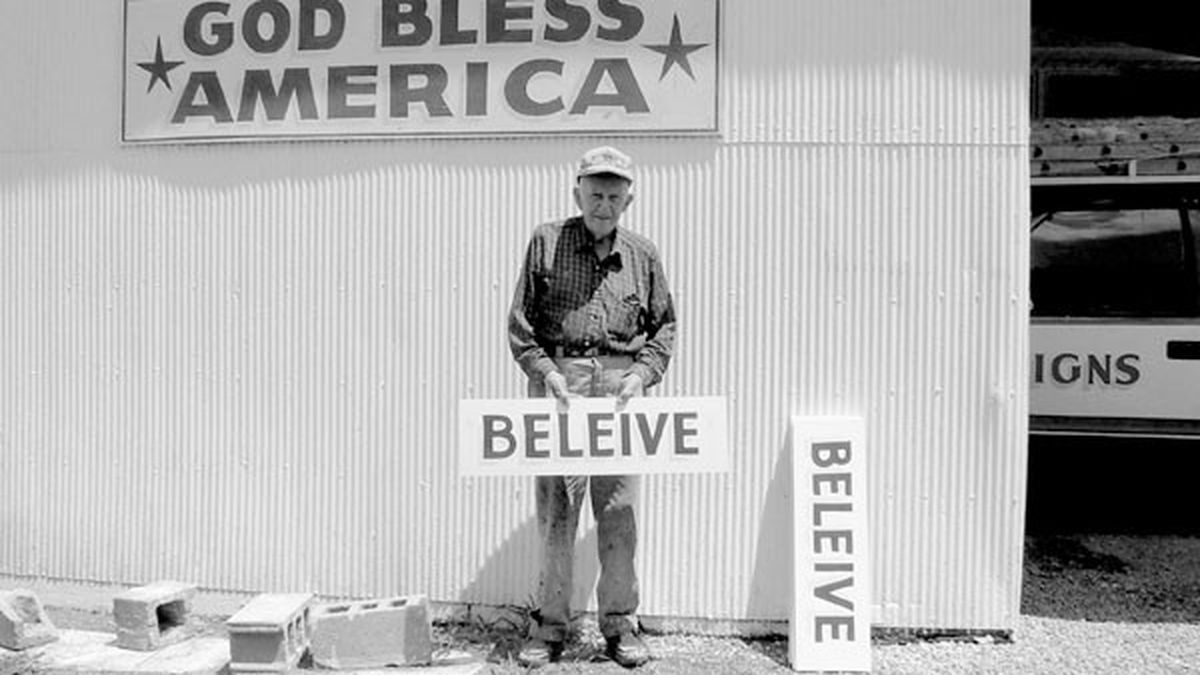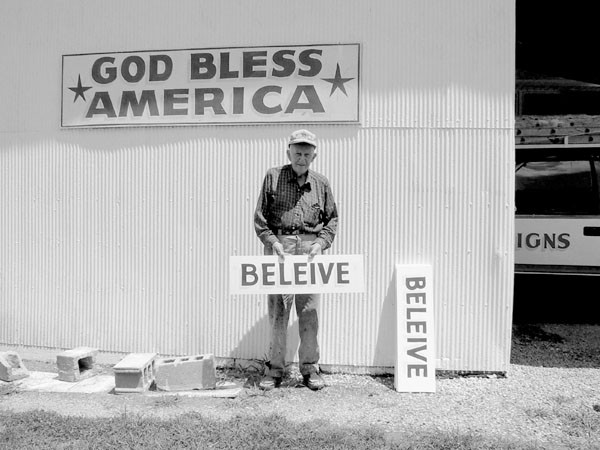Known for its offbeat music documentaries, the Noise Pop Film Festival always features one or two big-name biopics to draw people in (this year’s highlights are Bestor Cram’s Johnny Cash at Folsom Prison and the Wilco flick Ashes of American Flags), though the other films always focus on some arcane sub-culture or marginal character. This year’s theme seems to be “endangerment,” since a lot of the films focus on artists who slipped through the cracks of history — i.e., former Motown bluesman Andre Williams, who fell off in the ’80s and was later rescued by members of the Chicago punk scene — or embattled fringe scenes that seem always on the verge of extinction.
Of course there’s a lot of gloom and doom to be had this year, considering all the bloodletting that’s happened in the music industry. (It’s perhaps best encapsulated in Brendan Toller’s I Need That Record: The Death (or Possible Survival) of the Independent Record Store). But the better films tell stories of plucky survivors, many of whom made great contributions to 20th-century music, and never quite got their due. Some, such as Andre Williams and the Brazilian singer-turned-painter Arnaldo Baptista, managed to recast themselves and carve out a new niche, or adopt a new form of expression. Others live precariously and constantly get buffeted by changes in society. All of them seem endlessly fascinating. Below are four highlights from Noise Pop 2009:
Seven Signs: Music, Myth, and the American South
Directed by J.D. Wilkes, lead singer for the Nashville rockabilly outfit the Legendary Shack Shakers, this film offers a strange and often disorienting tour of the Gothic American South. Filmed in the backwoods of Kentucky, Tennessee, North Carolina, Louisiana, and Alabama, it shows a side of Southern culture that seems frozen in time: The small Appalachian communities with their carnival sideshows and their bogeymen and their Saturday night jamborees, many of whom have a strong oral tradition that mixes ghost tales, murder ballads, and slave narratives.
Free of voiceover narration — save for a few bits of commentary from sociology professor Peter Fosl, of Transylvania University — Seven Signs hops from one strange character to another, providing little context for any of them. But the characters are so fascinating by themselves that it really doesn’t matter: There’s John Akin, a local outcast who built his house on a graveyard, and became known as a devil worshipper; Jamie Barrier, the handsome North Alabama fiddler who guides us through a local dog cemetery; and I-Zombie, the East Kentucky TV show host who was burned in a fire at age two, and made his scar tissue part of his stage persona (he died shortly before the film’s premiere in Nashville). Collectively they represent a kind of moral stronghold against contemporary Southern identity, which is bound up in tony mega-churches and cheesy country music.
To the filmmakers, authentic Southern culture is the opposite of what you’d find in the pages of Southern Living magazine: It’s gloomy, raw, and un-pretty, full of ramshackle houses, guitar-picking folk musicians, and Okies who like nothing better than to sit by an old tarn and speculate about the third world war. The film’s dark, saturated color palette seems to underscore this point, as does the Kentucky street preacher who bookends the film, and an intentionally misspelled church sign that reappears throughout: “There is no lie in what we beleive.” (Saturday, Feb. 28, 2 p.m. at Artists’ Television Access, $9).
Nightflight: Born Again
Director Stuart Samuels recreates an ’80s USA Network music television series that apparently predated MTV by about two months (Night Flight premiered in June 1981) and enjoyed an eight-year shelf life. Like the show, Samuels’ tribute is more entertaining than substantive, but it does offer a bedazzling montage of old music videos by Grace Jones, Annie Lennox, Devo, the Furious Five, Simon Le Bon, Boy George, and the drag character Divine, plus interviews with the stars, many of whom appear in full regalia. (From a modern standpoint, people like Grace Jones and Boy George look absolutely bizarre, even considering the counter-culture from which they emerged.) Thrown in the mix are weird, filthy cartoons (i.e., Godzilla crushing Bambi or Keith Richards being interviewed on “The God and Devil Show”), faux commercials (advertising stun guns for recalcitrant children, or a new kind of “ego spray” with fifteen personality types), and celebrity interviews with all of the aforementioned, plus Johnny Rotten, Ice T, B.B. King, Lou Reed, and a host of others.
The one thing that really stands out from watching all these old acts mashed together is how impervious they were to mainstream culture. New wave singers followed no particular fashion trends, and a lot of their work seemed conceptual, rather than market-driven. Many of them were consummate gender-benders — Plasmatics singer Wendy O. Williams proved her mettle by driving a school bus into a stack of TV sets on one music video — and celebrated for it. The women were sometimes heavyset, the men feminine and fey, and very few of them had the type of sex appeal that’s foregrounded in current music videos. (An anti-apartheid video at the end looks like it could have been shot at “How Berkeley Can You Be?”) Still, their output was astounding. (Sunday, Mar. 1, 4:15 p.m. at Artists’ Television Access, $9).
Of All the Things
Jody Lambert’s directorial debut tells the unusual story of his father Dennis Lambert, a songwriter and record producer who wrote more than six hundred songs during his four decade career, seventy-five of which became Billboard hits. In 1972 Lambert recorded his first and only solo album, called Bags and Things. Stocked with cheesy love ballads, it had limited appeal in the US but garnered a wide following in the Philippines, much to the surprise of everyone — including Lambert himself. (Jody Lambert said his father used to check the stats occasionally and say it couldn’t be doing that well, but he apparently earned a large cult following through bootleg sales.) A Filipino promoter and radio DJ named Renen De Guia began courting Lambert shortly after the album’s release, trying to set up a tour of the Philippines. Lambert abstained but let the wooing persist for thirty years, during which time he left music, got a job as a real estate agent, and raised his family in Boca Raton, Florida. Then, in 2007, he finally gave in.
The resulting documentary is a patchwork of live concert videos featuring Lambert with his Roland synth and Filipino backup singers. It’s something you have to take with a grain of salt given the director’s filial ties, but if you can stomach the sappiness of it, Of All Things provides an engaging fish-out-of-water narrative about a behind-the-scenes guy who wrote great songs but can’t quite sing them, and isn’t sure how to behave when thrust before an audience of adoring fans. (Thursday, Feb. 26, 7 p.m. at Artists’ Television Access, $9).
Agile Mobile Hostile: A Year with Andre Williams
Husband-and-wife team Tricia Todd and Eric Matthies had two primary reasons for pursuing Andre Williams as the subject of their new documentary: 1) Their mutual fascination and desire to immortalize the ex-Motown-singer-turned-punk rocker. 2) They thought he would be easy to track down, which turned out to be wrong. It actually took a year to get hold of Williams and secure permission to follow him on a tour through Detroit, Los Angeles, and Eastern Europe, during which time the singer seemed to be degenerating. (He had walking pneumonia and was drinking pretty heavily throughout the filming.) But it was worth all the trouble.
Agile Mobile Hostile is a crackerjack budget documentary, not for its production values (which aren’t great) but for the storyline of its main character, who never ceases to amaze. Once a maker of oldie hits like “Shake a Tale Feather” and “Twine Time” — and later, “Humpin’ Bumpin’ and Thumpin'” — Williams fell into drug addiction and spent the ’80s panhandling on a Chicago bridge, featured in the opening shot of the film. He was rediscovered two decades later by a younger punk scene, and wound up resurrecting his old bloodbucket style, this time with a band of white kids to back him. The film rambles a bit but its band member interviews are hilarious (everyone has a crazy Andre story), and its main character is ultimately quite endearing. (Friday, Feb. 27, 7 p.m. at Artists’ Television Access, $9).
NoisePop|Seven Signs|Night Flight|Of All Things|Agile Mobile Hostile|Andre Williams|J.D. Wilkes
















